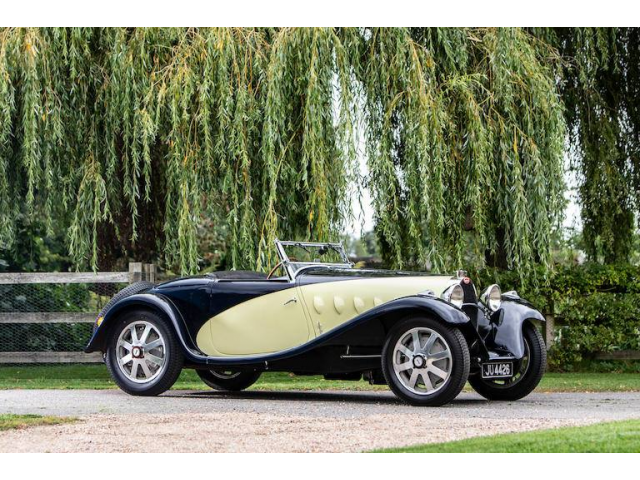1931 Bugatti Type 55 Two-Seat Supersport
- Brand: Bugatti
1931 Bugatti Type 55 Two-Seat Supersport Coachwork by Carrosserie Figoni
Bugatti had a long and lengthy history when it came time to produce the Type 55. Their resume included extremely successful race cars and elegant and sophisticated road going vehicles. In the racing department, the minimalist Type 35 was a very competitive car that racked up many impressive victories. It was, like so many other Bugatti's, available with either a naturally aspirated engine or with the addition of a supercharger. In the early 1930s, a new car was needed to keep Bugatti at the front of its game and to comply with new racing regulations.
Bugatti had been very successful in creating great racing machines and using the lessons learned to create performance-minded road-going cars. In other words, the technology that worked on the track often made it into the production vehicles. This continual growth and constant evolution aided in the marque's success both on and off the track.
Bugatti had been working on the Type 47 and its Grand Prix sibling Type 45 when the French Grand Prix was ended in 1928, effectively canceling these projects. Much time and attention had gone into designing these machines. The deep-section rail frame for the Type 47 Grand Sport was designed to house a three-liter U-16 engine. The chassis frame, with its widely spaced rear springs and long rear-axle trailing arms, was strong enough to house a larger engine, which it did with the Type 54 Grand Prix. The engine was a 4.9-liter unit straight-eight. Jean Bugatti continued his previously successful endeavors by offering a de-tuned version of the Grand Prix car for road-going purposes.
The Type 55 was given the Type 47/54 chassis and a lower compression Type 51 Grand Prix engine. A very attractive, Jean-Bugatti designed, two-seater coachwork was created for the Type 55, along with a similarly styled coupe body coachwork.
Production of the Type 55 began in 1932 and continued until 1935 with a total of 38 examples created. 23 examples were completed during its first year of production. The straight-eight engine had cast-iron block and head, dual overhead camshafts, Zenith carburetor, Roots-type supercharger, and displaced 2262cc. There was a four-speed manual gearbox, cable-operated drum brakes at all four corners, and live axle suspension.
Descriptions & pictures by conceptcarz & bonhams
| Specification | |
| Production Start | 1931 |
| Country of origin | Italy |


































